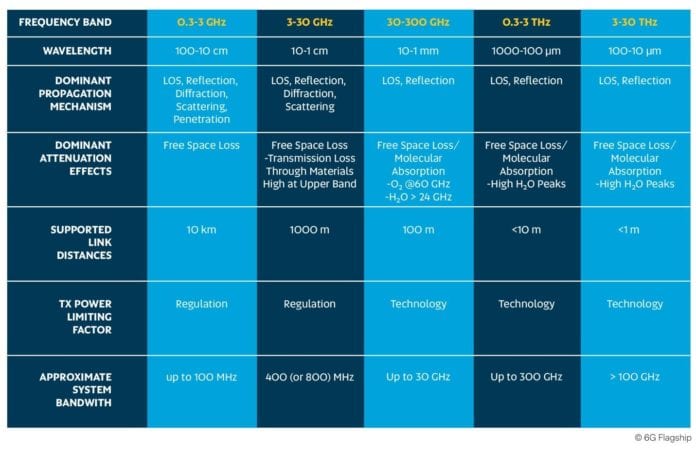Everything about 6G networking is still up in the air, but a new whitepaper – the first of many to come – is the first step in defining a service that won’t be available for at least 10 years. The document, titled “Key Drivers and Research Challenges for 6G Ubiquitous Wireless Intelligence,” might seem premature as 5G networks are not yet fully established, but in fact its right on time if the concept is to be turned into actual services by 2030.
The whitepaper makes some bold claims about 6G’s impact on society and on its throughput, but the writers also emphasize that no one has all the answers right now. But the focus will be on ever higher bandwidth limits, as this quote emphasizes: “The bottom line of 6G is data. The way in which data is collected, processed, transmitted and consumed within the wireless network should drive 6G development.”
The one thing that is clear is that 6G will utilize increasingly high-frequency RF bands that will require as yet undeveloped RF filter resonators. Without these RF filters, the performance promised by 6G will not be attained.
Why now
The new whitepaper is authored by several professors at the University of Oulu in Finland, which is one of two 6G Flagship schools recently funded by the Finnish government and by telecom equipment firms to find the answers to critical technology questions required for 6G to become reality.
As expected, 6G will be faster than 5G with the goal to deliver 1Tbps user connections. That may seem like overkill for streaming video and other applications that we can imagine using today’s devices. However, the paper anticipates other use cases that will benefit from the high throughput and low latency anticipated for 6G. These include manufacturing automation technologies, sustainable energy, e-health, and autonomous transportation.
Ubiquitous wireless intelligence
The whitepaper authors see the overall theme of 6G use cases as being focused on ubiquitous wireless intelligence. The ubiquity comes from wireless connectivity that is built into the critical infrastructure. The intelligence refers to the creation of context-aware smart services and applications for human and non-human users alike. Taking it to the extreme, Marcus Weldon of Nokia Bell Labs, says that 6G will be a “sixth sense experience for humans and machines” where biology meets AI.
6G spectrum
The authors of the whitepaper set the goal of 6G throughput at 1 Tbps per user. Getting to that level, they say, will take the utilization of the spectrum in the THz frequencies. That comes with challenges as this high frequency bands are subject to extreme absorption and reflection challenges. The table below is from the whitepaper and shows what the dominant propagation and attenuation effects are as higher frequencies are used. The paper notes these challenges and proposes that research be organized around solving these issues.

Figure 1: Table showing performance of various frequency bands including Terahertz bands.
Getting to 1 Tbps
The throughput demands of 6G will impact every aspect of mobile device designs and the whitepaper authors touch on transceivers, semiconductors, optics and new materials, but they don’t touch the issue of interference and noise degradation, which will decide the actual throughput between the network and the device’s processor.
The Shannon–Hartley theorem is a formula that calculates the maximum data rate through a channel. The theorem is C = M*H*log2 (1+SINR), where
- C = channel capacity in bits/second
- M = number of channels
- H = bandwidth in hertz
- SINR = signal-to-noise ratio (interference)
To deliver 6G, capacity increases will require multiple technology breakthroughs that will increase the number of channels, bandwidth and signal strength while also minimizing noise.
While we know for a fact that 6G is coming, it will require techniques to maintain signal integrity, as in all previous generations of wireless technology. For now, all we can do is wait for the framework to be developed . Meanwhile, with 5G devices hitting the mass market in the next year or two, there’s plenty to be done to finalize the filters needed for these devices and infrastructure in order to make the promise of 5G a reality.

